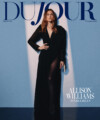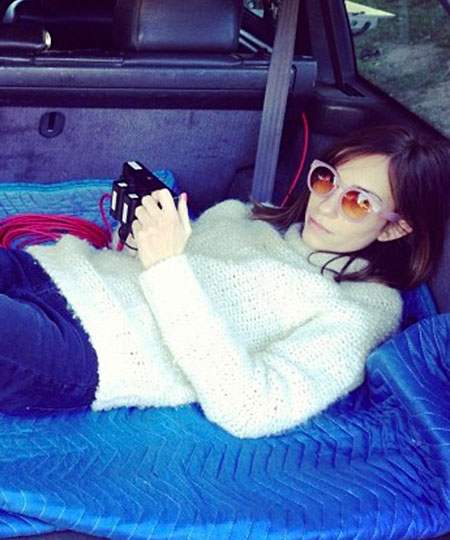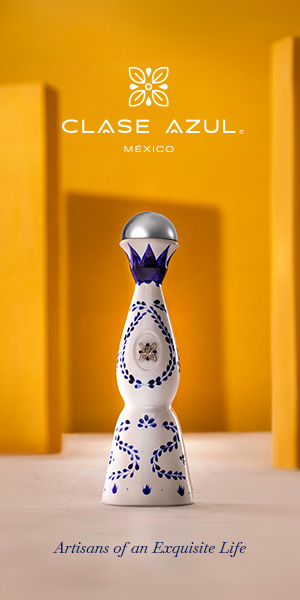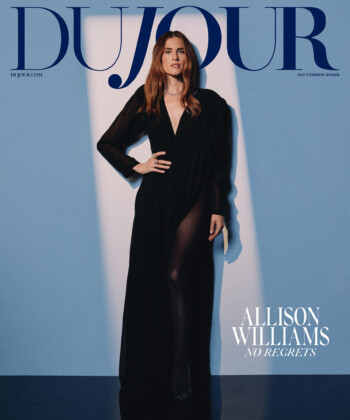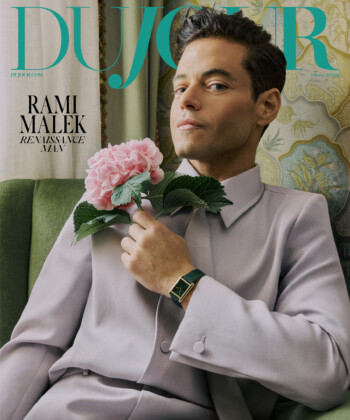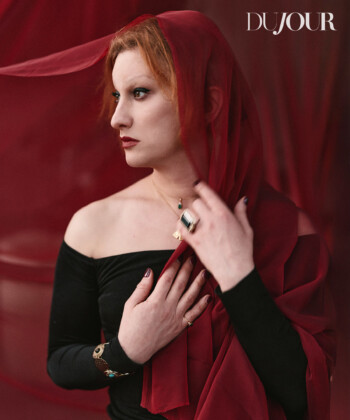For her directorial debut Palo Alto, Gia Coppola—granddaughter of Francis Ford and niece of Sofia and Roman—wrangled friends including Jack Kilmer, Nathalie Love and Emma Roberts to appear on screen.”It was a lot of throwing my friends in there and getting friends of friends to be in it. It was so low-budget that we didn’t have casting,” the director says with a laugh.
Casting wasn’t the most difficult part of the process for Coppola while she was adapting her drama from a book of short stories by James Franco, however. The real problem? “It was having these bonds with people in this movie and then having to let go,” she says. “But as my grandfather says ‘better is the enemy of the good,’ and you’ve just got to let go.”
Just like movie making, wine is a family affair in the Coppola household. Francis Ford Coppola runs a Sonoma vino empire and has encouraged his brood to create wines under his label. So, just in time for summer (available May 1), the director has created three unpretentious wines under the Gia by Gia Coppola label: a mineral-y, gently-sweet Pinot Grigio; a smooth, acidic Pinot Noir and a fruity, fresh sparkling chardonnay Frizzante, all priced under $14.

Frizzante, Pinot Noir, Pinot Grigio
What’s next for Coppola aside from Palo Alto‘s Tribeca Film Festival premiere? “I would like to make a grape soda and I’d love to learn about making a spirit, maybe even a really fancy one.”
DuJour recently sat down with Coppola over breakfast to talk filmmaking and wine-making.
How did you meet James Franco?
We had seen each other at a deli, and then later that night we saw each other again. And my mom [stylist Jacqui Getty] had always said we’d really hit it off, and so she dragged him over and introduced us. He’s interested in what younger people are up to and I had just finished college at the time, and I was a photography major so we were talking about that, and then we stayed in touch.
Had you read the book?
[Franco’s book of short stories] Palo Alto just articulated what it’s like to be a teenager better than anything else that I’ve read—like, the emotions and the language and what teenagers actually do. He said he wanted to adapt the book into a movie but didn’t want to direct it; he wanted someone else’s interpretation. He told me to make a test version, borrow a camera and use my friends as actors.
What was that like?
He was supportive and there when I needed him. He really took me step by step with what I needed to do with the script. But for a long time we couldn’t get financing for this film, and it took about two years because I think a lot of people didn’t want to invest in me because I hadn’t really made anything. And I wanted to cast younger kids—which can be expensive—and unknowns who also hadn’t had a lot of experience, but James really stuck by me.
What are some of your favorite films about teenage life?
I loved The Virgin Suicides, The Outsiders, The Last Picture Show and American Graffiti, more of these ensemble stories of teenagers. I felt like there weren’t any movies about real teenagers, just these movies about teenagers where the actors are 25, and they all had perfect hair and like, perfect, expensive clothes and not a single zit and great makeup.
What was your high school experience like and did you draw on that when directing the film?
I think high school just wasn’t ever really the place for me—I think my brain just couldn’t work in that sort of test-taking, academic environment, and I felt creative but I couldn’t really find out what I wanted to be creative in.
I think everyone is trying to figure out who they are, but James says that teenagers are interesting subject matters because they’re dealing with things that we all deal with, but it’s just so much more on the surface and so much more raw. I definitely struggled with trying to find my place and I wasn’t really doing that well in school, so I left my senior year and got my GED and then went to community college, and that was kind of where I started being able to take classes I wanted to take, and then I realized I wanted to go to college at Bard.
It was a family affair on set, too. Your mother plays Emma Roberts’ character’s mother in the film.
I always wanted her to play that part because I knew she was a good actress, but she really didn’t want to do it and she kept making me look at other people, and I really just wanted her. And then eventually I got her to do it, and she and Emma have a really nice relationship without me, so it just translated perfectly. It was funny—after the scene she would look at me and be like, “did I do okay?” Now she really likes acting, so I hope she keeps doing it!
And obviously filmmaking runs in your blood. Did you consult with your family on this project?
I wanted to find my own voice in all of this. They’re great and I admire their movies, but at the same time, it wouldn’t really help me if I wasn’t learning and trying to do it on my own. So I asked them for advice here and there, especially in the business side of things, but it was through James’ production company so I leaned on him in that creative sense.
James is really specific about little things, which I think is really helpful in the long run. Sometimes you’re hoping for someone to give you all this feedback, but I think sometimes it’s better if they give you just a note here and there.
Let’s talk about your Gia by Gia Coppola wines, under the family umbrella. How did that come about?
I was envious of every family member having their own wine, but I was always too young to drink. I would always have wine on the table and mix it with 7Up so it would taste better. After college, I went to bar tending school and got interested in mixology, and it just so happened that when the winery was ready to produce more wine, I was done with my movie. My grandpa is really interested in getting younger people into wine, because everyone just kind of wants to get drunk really fast. Now I’m at an age now where my friends and I enjoy wine and we go to the liquor store and we’re trying to learn more about what we like, so it was a fun thing to get into.
They are really good summer wines. The Pinot Grigio you could mix with sangria, and the Frizzante is good to mix with juice too. They are lighter and have lower alcohol contents. My mom is excited because of the lower calorie count!
Were you very involved in the process?
Well, that was sort of part of the deal: You can have a wine, but you have to be involved in it and be around and available. It was fun for me; I was involved the tastings, the bottle design and the label-making and trying to think of new innovative ways to market it. The price point was really important for me, because a younger person’s strategy is to look at the price tag and then choose a wine. That’s something my grandpa’s really dedicated to—he has a very high-end brand of wine, but he also wants to make very good wine for cheap. It was a fun project for me to market good, affordable wines to my age group.
What was the most unexpected thing you learned about making wine?
That it’s a lot like making a movie—there are all of these components and in the end you have this final product that’s like a movie, but it’s a wine bottle, and sometimes you have to make some last-minute decisions, and things get chaotic, but it’s fine.
Gia by Gia Coppola wines are available May 1 at wine stores nationwide.
MORE:
Why You Shouldn’t Serve Champagne In a Flute
A New Breed of Wine Tasting Rooms
Grape Escapes: South Africa’s Vineyards














